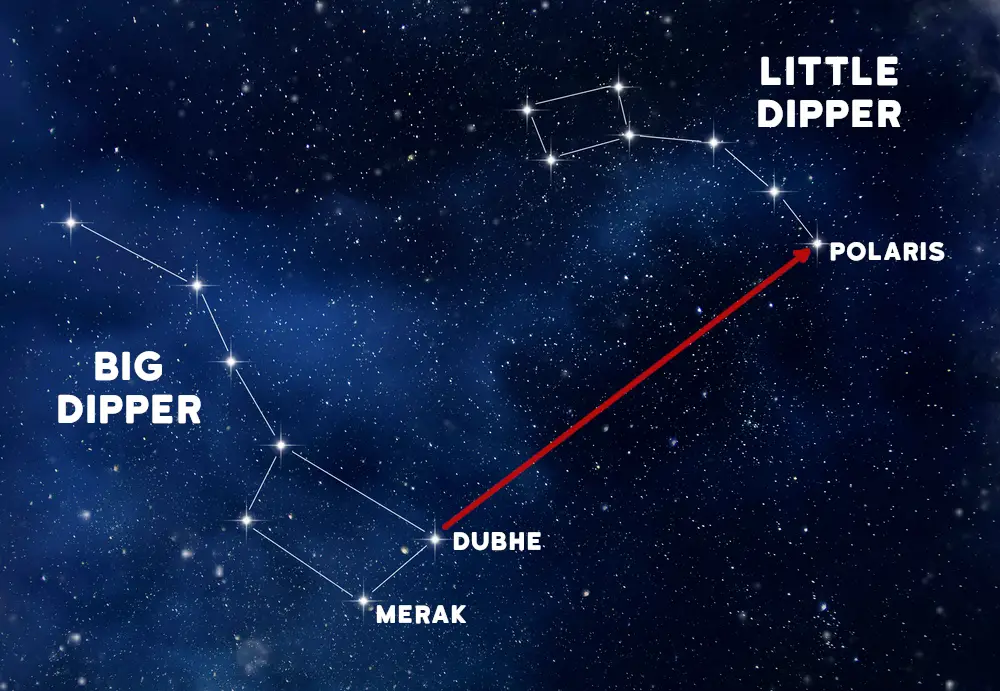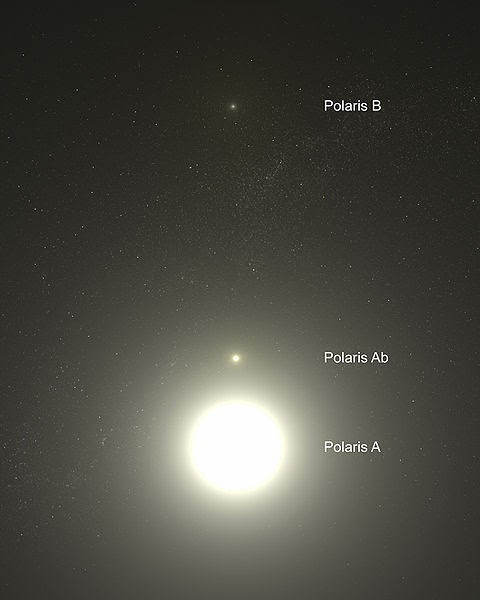The most well-known star by far is the North Star, but it’s not really just one star in the night sky. Polaris, or the “North Star,” is actually a set of three stars that orbit a common center of mass.
Polaris A is the primary star and has about six times the mass of our sun. It’s considered a supergiant. 2 billion miles away is Polaris Ab. Even farther than that at 240 billion miles from Polaris A is Polaris B. These two companion stars are considered dwarf stars. Polaris A is a mere 434 light-years away from us and is considered the 50th brightest star in the sky.
To find the North Star, locate the big dipper, one of the easier constellations to spot in the night sky. If you get to the bucket part of the big dipper (where the water looks like it will pour out), there are two “pointer” stars called Merak and Dubhe. If you follow the line these stars make and continue out straight from that point, you’ll spot Polaris, the North Star.

Polaris is such a good navigational tool because it hardly moves as the other stars move around it. If you’re on the North Pole, you would see it directly overhead, and as you move south, you would see it drop to the horizon. It drops from view below the equator, so it’s not that helpful for those in the Southern hemisphere.
To use it to judge your position, face Polaris and stretch out your arms. Your right arm will be east, your left arm will be west, and your back will be south. It’s not the most accurate of measurements, but it might just get you to where you’ll need to go, and it’s seemed to work okay for thousands of years.
Bonus Fact: Thuban, a star in the constellation Draco the Dragon, was the North Star about 5,000 years ago when the Egyptians were building the pyramids. Errai will become the North Star in the future around 4000 AD.


